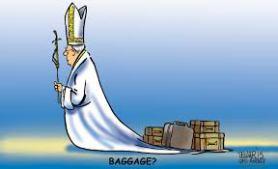A First Look at the Economic Impact of Abuse OR: Who Really PAYS?
By Lewis Blayse
The economic costs of child sexual abuse are very difficult to estimate. Most authors err on the side of caution and use the lowest estimate as the basis of their papers. Taylor et al. (2008) (see references below), for example, use the lowest rates of reported abuse, to arrive at a figure for an “incidence cost” (cost to the taxpayer plus cost to victims) of between $13.7 billion and $38.7 billion, in Australia. Since this is a preliminary article, the average figure of about $25 billion will be used, even though most would agree that even the higher figure of $38.7 billion is probably far too small in reality. Again, using the lower bounds of the statistics, about 10% of child abuse is child sexual abuse. This means that this abuse costs $2.5 billion. Allowing, yet again, for the minimum figure, 7% of child sexual abuse comes from strangers, mainly religious sources, and others such as Scouting. This yields a final figure of $175 million, as the cost of clerical and other offenders’ child sexual abuse, to the taxpayer and the victims. Of this, to be really conservative with the figures, it can be deduced that the minimum cost of clerical child sexual abuse is of the order of $100 million to the taxpayer and victims. The churches should reimburse this cost. Instead, government pays the churches to supposedly “care for” and “counsel” victims, from which the churches make substantial profits. To add insult to injury, unlike everyone else, these same churches pay no tax on their profits. In short. Not only do they cost the community, the abusers they have protected are earning them money in the long term. Something is rotten in the state of Denmark here. A Psychology Today study estimates the life-time cost to the average victim as being $210,000. This makes a mockery of the average $10,000 to $20,000 pay-out to victims. Again, in short, the churches pass a cost of between $190,000 and $200,000 to their victims. If life were fair, then any compensation payment should, at least, be this amount which represents lost earnings and other personal costs to the victim. Then there must be a “pain and suffering” component. The message about the economics of child sexual abuse has not been adequately presented to the general public. A report for Access Economics by Dr Joe Tucci, of the Australian Childhood Foundation, found that 54% of people surveyed did not identify child abuse as causing a substantial cost to Australian society. The churches, and other organisations, which harbour the bulk of non-familial child sexual abusers, would very much like this situation to continue. It is perfectly valid for the Royal Commission to evaluate the economic impact of past policies by these organisations, and recommend funding redress. Hopefully, some economists, with a conscience, will see that this happens. [Postscript: Cardinal George Pell has not yet given an indication that he is prepared to sell his $30 million Rome hide-a-way to boost the Catholic Church’s victims’ compensation fund.]
|
.
Any original material on these pages is copyright © BishopAccountability.org 2004. Reproduce freely with attribution.
